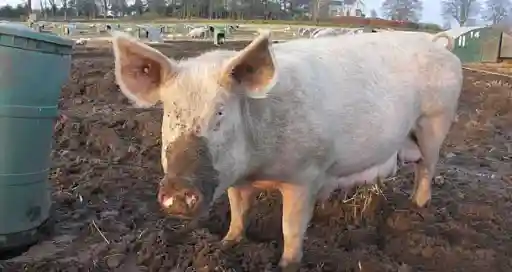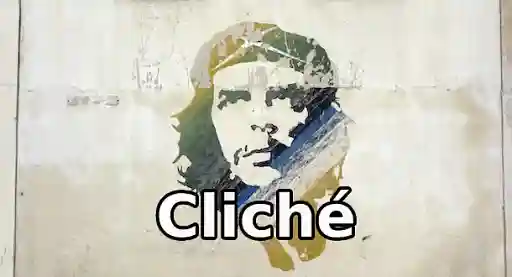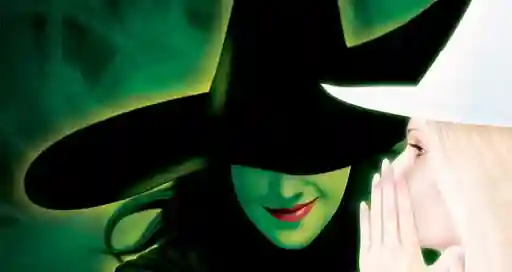It can be tempting to get flowery with the formatting of your picture book manuscript. Children's stories are meant to be charming, after all, so their presentation should reflect that!
However, the mundane truth is that you’re better off saving the whimsy for your words and illustrations.
In this post, we'll walk you through everything you need to know about formatting your manuscript to get it ready for submission. We'll provide practical tips, along with some examples of what manuscripts for popular children's books might look like. Let's get started!
Configure your font and margins
Agents and publishers read through manuscripts on a daily basis. If you want to avoid ending up in the dreaded slush pile, make their lives easier by keeping your manuscript straightforward and legible.
Follow these essential rules to get your manuscript ship-shape for submission:
- Font: use a standard font like Times New Roman in a 12-point size.
- Spacing: double-space your manuscript to make sure it's readable.
- Margins: set your margins to 1 inch (2.5cm) on all sides.
- Page numbers: Place your page numbers in the top right corner. (Note: these should start from the first page of your manuscript, not your title page).
Most agents and publishers will follow these industry standards, but it's always worth checking their submission guidelines in case they have any specific preferences.
As you may have guessed, your title page will look a little different from the rest of your manuscript — let’s cover that here.
Add essential info to your title page
As the first part of your manuscript that an agent or publisher will see, getting the formatting for your title page correct is an essential step in clinching that all-important positive first impression. Make sure to include the following in the top left corner:
- The book title, fully capitalized.
- Your name (or pen name).
- Your email address and phone number.
- The total word and page count.
Here’s an example of what your title page might look like:
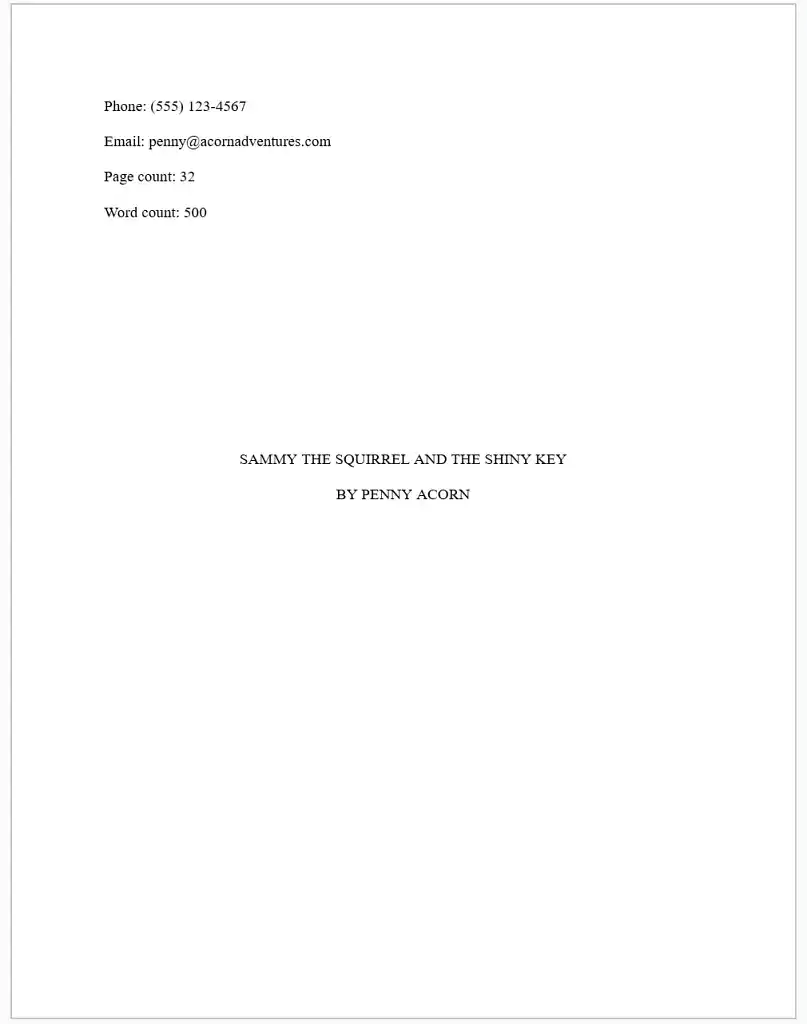
It might seem a little bare-bones, but simplicity here is key (pun intended). Your title page should only include essential information: nothing more, nothing less.
Once you’ve got those basics covered, you can turn your attention to more specific, picture-book formatting.
Use illustration notes, not pictures
Nailing the formatting for a picture book can be a little trickier because they include, well, pictures!
You may feel inclined to include a few rough sketches of how you picture the illustrations will look, but this is generally ill-advised if you’re not planning to illustrate your book yourself. If you pair your beautifully written manuscript with some not-so-beautiful mockups, the publisher might assume your illustrations are part of the pitch and pass on your submission entirely.
To avoid throwing the baby out with the bathwater, stick with plain old text for the most part, and add an “illustration note” where appropriate. You should also label your page numbers to make the picture book’s layout easier to imagine. Here’s what the second page of our made-up picture book might look like:
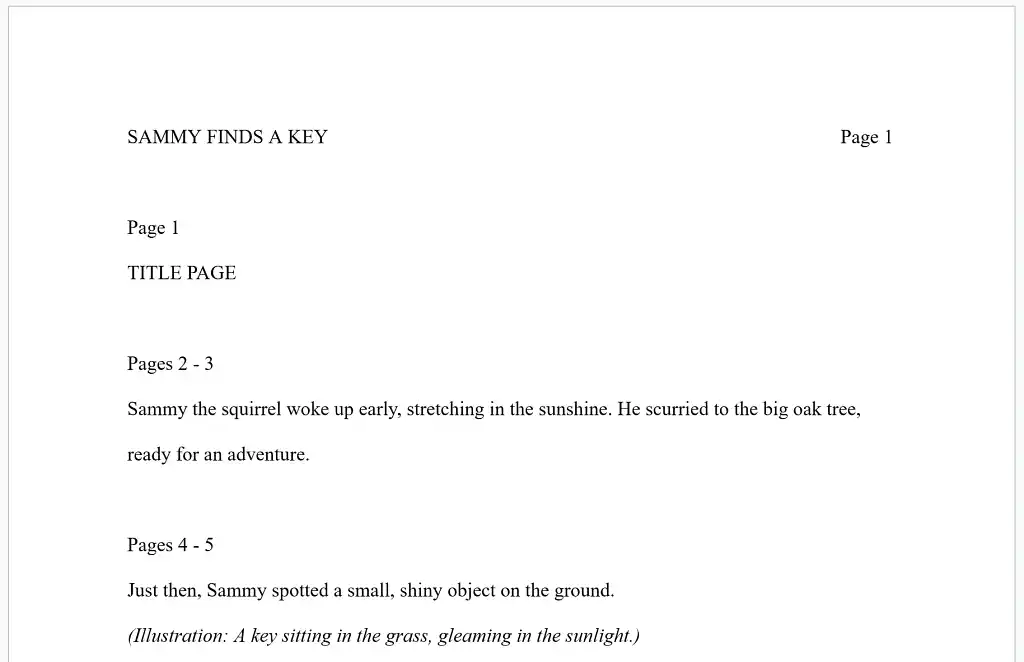
As shown here, an illustration note is a quick description explaining a visual detail that the text doesn’t convey on its own. However, take care not to clutter up your manuscript with too many of these. You want to leave your illustrator some room to get creative!
A good rule of thumb for you to follow: if an action is clear from the text, don’t include an illustration note.
You might be talented enough to write and illustrate your book. In that case, the process is slightly different. Preferences will vary across different agents and publishers — some may appreciate a few sample mockups in place of illustration notes. Here’s what a manuscript for Matthew Gray Gubler’s The Little Kid with the Big Green Hand might look like:
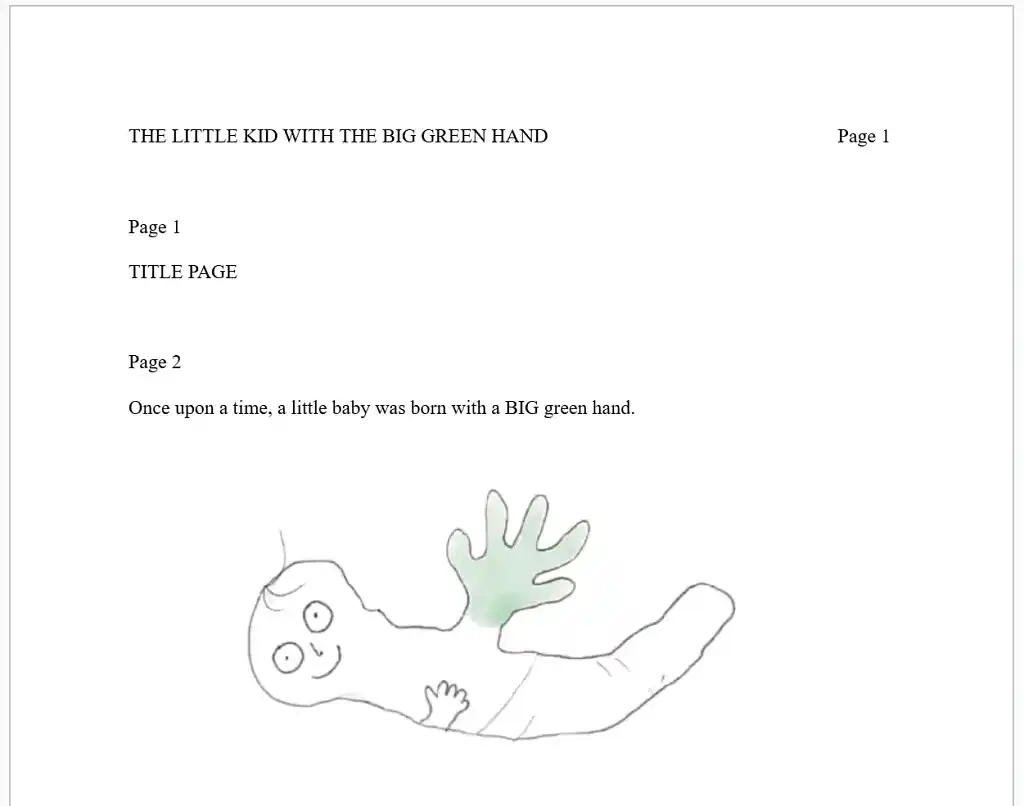
There’s no need for an illustration on every page — just include enough to showcase your art style and demonstrate any action that isn’t explicitly clear from the text alone.
If you’ve double-checked the submission guidelines and you’re still unsure on how to best represent your illustrations, including illustration notes along with a link to your online portfolio is a good way to keep all your bases covered — your manuscript will remain uncluttered, and potential agents and publishers will still get a sample of your artwork. Win-win!
Clearly signal your page turns
Page breaks are another key consideration you’ll need to make when formatting your manuscript. Picture books are designed to follow a rhythmic pattern that young children find easy to engage with, so the “page turn” is an essential component to make your story flow.
Consider how you want to represent the page turn in your manuscript. Remember, readability is key — if you have very few words on each page (like the examples above), you may be better off excluding written page breaks to keep the focus on your writing.
Stories that are aimed at older readers (and are therefore a little less picture-heavy) will have slightly different rules for page breaks. Here’s a sample manuscript for a children’s book that’s more on the wordy-side — The Hotel Balzaar by Kate DiCamillo:
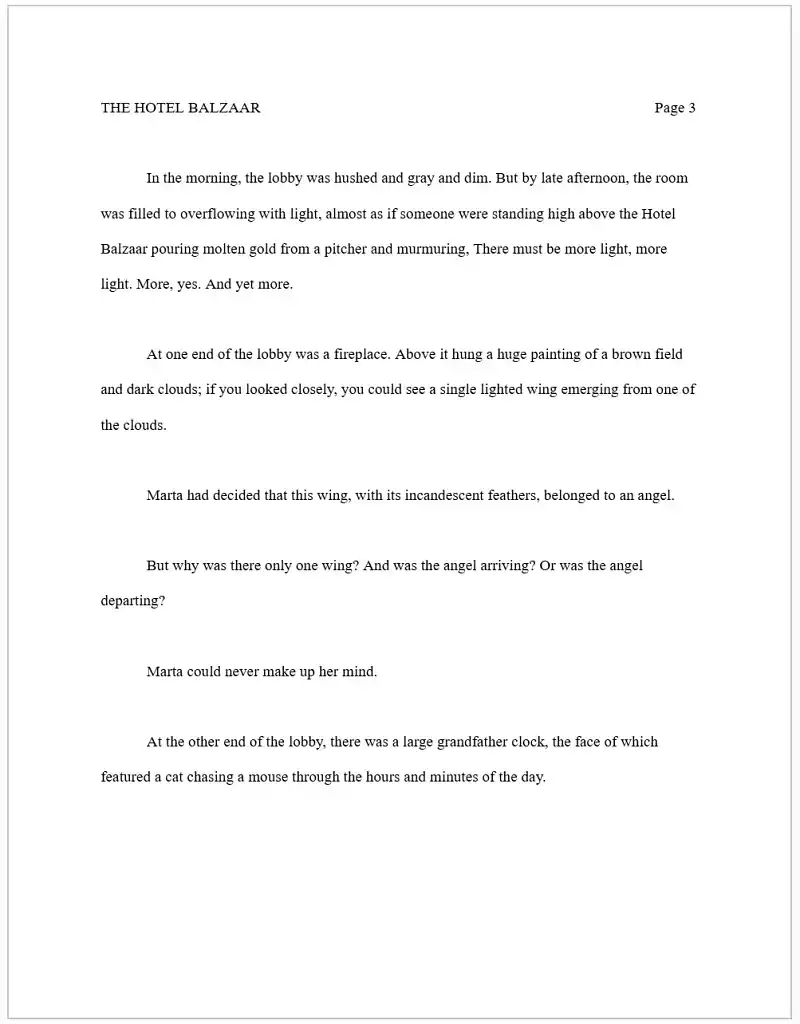 Each page in this manuscript will correlate with a page in the final print copy, so there’s no need to explicitly label each one like we did in our other examples — the final page number is made clear in the top right corner of the manuscript instead.
Each page in this manuscript will correlate with a page in the final print copy, so there’s no need to explicitly label each one like we did in our other examples — the final page number is made clear in the top right corner of the manuscript instead.
Indicate new chapters with distinct headings
The older your target audience, the fewer illustrations that your manuscript is likely to feature. This transition to wordier books presents a new formatting problem to solve: how should you denote a chapter break? Fortunately, the answer here is straightforward, and as always, clarity is king — a simple, bolded heading will do the trick, like so:
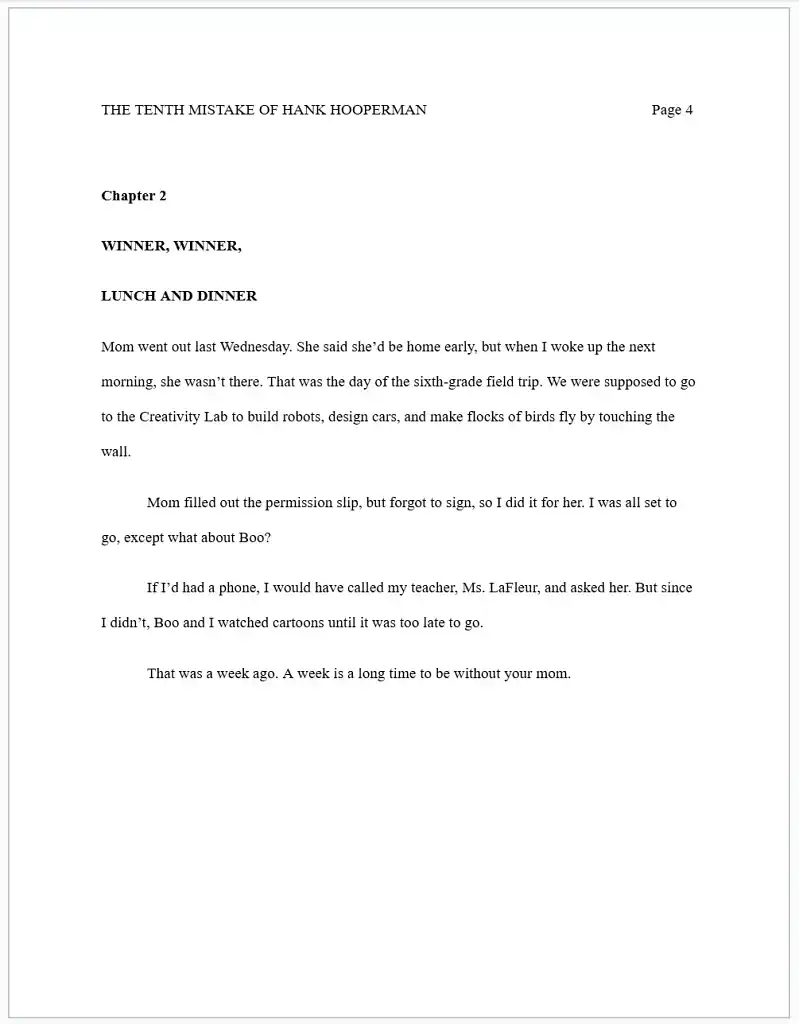 For chapter books like Gennifer Choldenko’s The Tenth Mistake of Hank Hooperman, you don’t need to include the page count on your title page. The rhythmic page turn is much less of a factor here, and your final page count will vary depending on your book’s final font and page size when it goes to print, so there's no need to get specific.
For chapter books like Gennifer Choldenko’s The Tenth Mistake of Hank Hooperman, you don’t need to include the page count on your title page. The rhythmic page turn is much less of a factor here, and your final page count will vary depending on your book’s final font and page size when it goes to print, so there's no need to get specific.
Be sure to indent the first line of each new paragraph (as shown above), except for the first paragraph of a new chapter.
Submit in .docx or .pdf formats
You're almost there! With your manuscript polished and properly formatted to meet industry expectations, the final step is to save it in a submission-ready format:
-
File format: Most professionals will prefer manuscripts submitted as either a .docx or .pdf file, but double-check the submission guidelines if you're unsure.
-
File name: Give your manuscript a professional title that makes it easy to identify at a glance — a format like “Lastname_TITLE” is tried and true.
A quick manuscript-formatting quiz
Now that you're well acquainted with the dos and don’ts of children’s book manuscripts, we’ll leave you with a quick quiz to test your newfound knowledge. There are nine things wrong with the children’s book manuscript below: what are they?
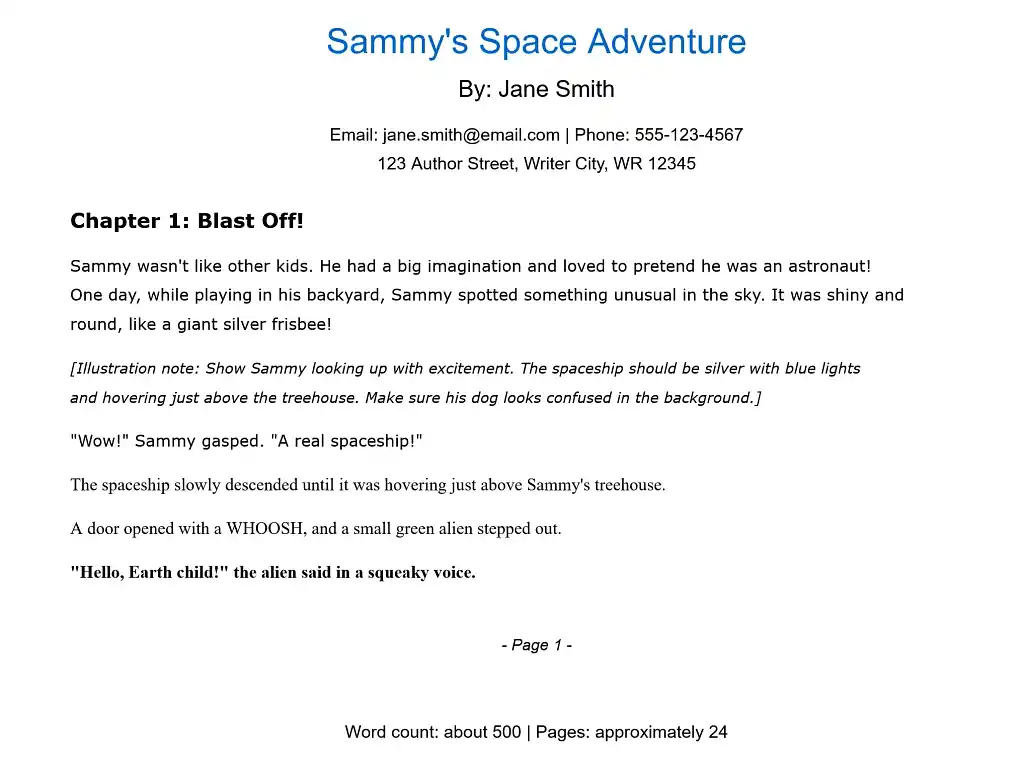
Once your children’s book manuscript has been fully formatted, it’s time to start the submission process! You can check out this post for a detailed guide on how to write a query letter for your picture book.
About the author

Nick Bailey writes about anything and everything in the realm of writing and publishing. From articles on honing your craft to launching your book, Nick aims to provide valuable insights and practical tips to the Litreactor community in his posts. Aside from books, Nick enjoys hiking, electronic music, and filling up his personal cookbook with new recipes.



